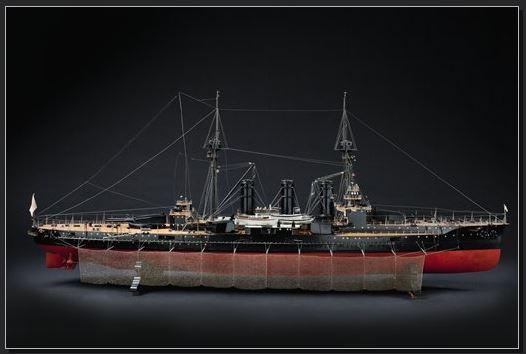Dig Deeper - The first convoy
Australia’s involvement in the Great War led to many "firsts" – but few as fateful as the day the very first convoy of Australian and New Zealand troops left Albany, in Western Australia, for a journey into the most devastating conflict in Australia’s history. It was exactly 100 years ago tomorrow – 1 November 1914.
A century on, the Albany convoy is well remembered as a symbolic beginning of Australia’s active involvement in the war. But dig a little deeper and other significant aspects come to light:
Charles Bryant, First convoy at sea, 1920, oil on canvas, 122.5 cm x 275.3 cm. ART00190
It was a great logistic achievement
Australia may have been at war with Germany since August 6, but creating and outfitting an army of thousands to fight on the other side of the world was no straightforward task. The huge number of volunteers coming forward to enlist all had to pass medical and fitness tests, be properly organised, and undergo initial training. Each recruit needed the equipment for their role, as well as provisions and supplies for the long journey overseas. In all, 30,000 men and thousands more horses were loaded onto 38 Australian and 10 New Zealand troopships. Once at their destination, supply routes had to exist to keep the soldiers stocked with the necessities for life and war, including advanced medical facilities for the sick and wounded. All this, and much more, presented a logistical challenge for which there was no precedent in Australia. That it could all be done in under three months was an impressive feat.
It was a dangerous journey
The navy did not have dozens of troopships on hand at the start of the war; the ships they used had been owned by steamship companies and the government paid to requisition and convert them for a wartime role. These hasty conversions meant the ships were often cramped and crowded, and in such conditions disease could spread rapidly. Influenza, meningitis, and pneumonia were the leading causes of death while at sea.[1]
Potentially more dangerous, however, was the fact that powerful hostile naval forces lay between the convoy and its eventual destination in the Middle East. The German East Asiatic Squadron, and in particular the cruiser Emden posed a threat. Roaming the Pacific, the Emden had captured or sunk 21 allied vessels. Concern for the safety of the troop convoy had prompted the government to assign a heavy escort: the British armoured cruiser HMS Minotaur, and the Australian light cruisers HMAS Melbourne and HMAS Sydney. Even with such protection, the unseen threat of submarines and sea mines could have brought disaster to the voyage.
We were helped by our Japanese allies
Two days after leaving the port of Albany, the convoy’s escort was strengthened by the arrival of the powerful Japanese battlecruiser Ibuki, sent to provide additional protection. Australia and Japan were allies in the First World War, a fact that the later experience of the Second World War can sometimes obscure. Based on the 12 year-old Anglo-Japanese Alliance between Britain and Japan, it was nonetheless an uneasy alliance for Australia. Long suspicious of Japanese plans in the Pacific, Australia feared a situation in which Britain’s Royal Navy was caught up in a European war and could not protect Australia from potential agressors. It was a great relief when in 1914 Japan announced that it would honour the Anglo-Japanese Alliance and enter the war on Britain’s side.

Model of the HIJMS Ibuki. RELAWM08039
The Ibuki guarded the convoy when the Sydney famously caught and defeated the Emden in battle off the Cocos Islands.
On 3 December, the convoy arrived in Alexandria, Egypt. For many of the troops that disembarked there, the port of Albany they left a month earlier would be their last sight of Australia.
To mark the 100th anniversary of the departure of the convoy, commemorative services will be held both locally and nationally, and include a march of Australian and New Zealand Defence Force troops through Albany, before the departure of Australian and Japanese warships from the harbor.
Notes
[1] A. G. Butler, “Sea transport of Australian soldiers”, in The Australian Army Medical Services in the war of 1914– 1918, vol. 3, p665

